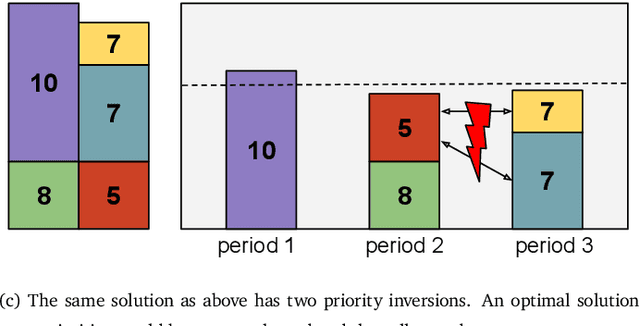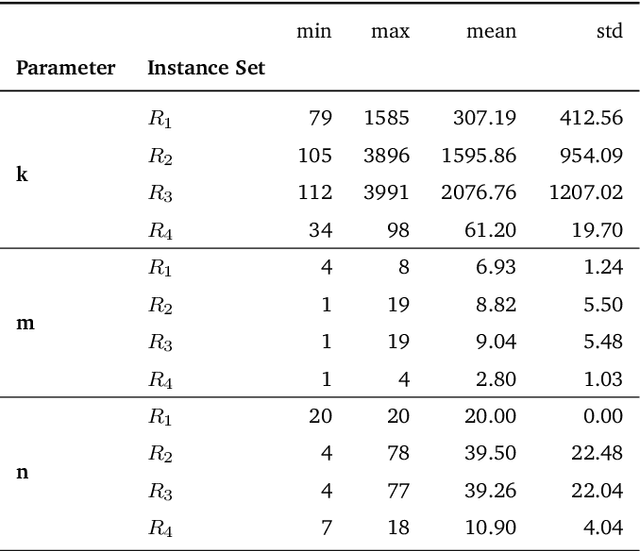Johannes Vass
Exact and Metaheuristic Approaches for the Production Leveling Problem
Jun 15, 2020



Abstract:In this paper we introduce a new problem in the field of production planning which we call the Production Leveling Problem. The task is to assign orders to production periods such that the load in each period and on each production resource is balanced, capacity limits are not exceeded and the orders' priorities are taken into account. Production Leveling is an important intermediate step between long-term planning and the final scheduling of orders within a production period, as it is responsible for selecting good subsets of orders to be scheduled within each period. A formal model of the problem is proposed and NP-hardness is shown by reduction from Bin Backing. As an exact method for solving moderately sized instances we introduce a MIP formulation. For solving large problem instances, metaheuristic local search is investigated. A greedy heuristic and two neighborhood structures for local search are proposed, in order to apply them using Variable Neighborhood Descent and Simulated Annealing. Regarding exact techniques, the main question of research is, up to which size instances are solvable within a fixed amount of time. For the metaheuristic approaches the aim is to show that they produce near-optimal solutions for smaller instances, but also scale well to very large instances. A set of realistic problem instances from an industrial partner is contributed to the literature, as well as random instance generators. The experimental evaluation conveys that the proposed MIP model works well for instances with up to 250 orders. Out of the investigated metaheuristic approaches, Simulated Annealing achieves the best results. It is shown to produce solutions with less than 3% average optimality gap on small instances and to scale well up to thousands of orders and dozens of periods and products. The presented metaheuristic methods are already being used in the industry.
 Add to Chrome
Add to Chrome Add to Firefox
Add to Firefox Add to Edge
Add to Edge